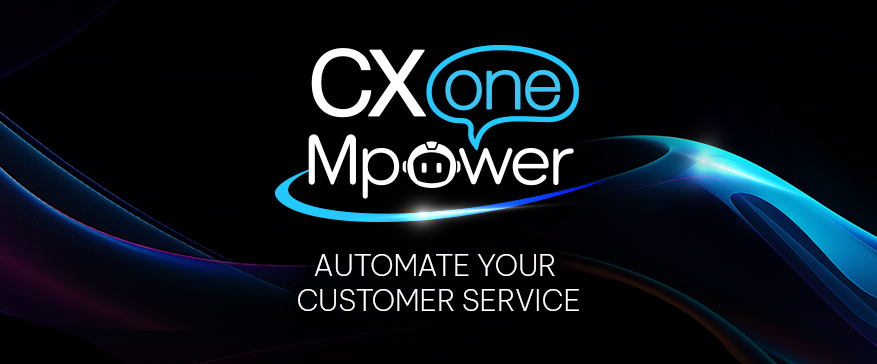- Intertwined, non-linear customer journeys across channels, including various digital touchpoints
- Informed, personalized digital experiences based on previous experiences, preferences,
and customer expectations - Self-enabled experiences that make your customer and your organization more efficient and effective
The building blocks for creating customer-centric digital experiences
To continually deliver delightful digital experiences, it’s important that customer experience, digital experience, and IT leaders look outward for the most impactful CX insights—and then act quickly to build or refine digital experiences around what customers value most.Where to get that real-time insight into the customer journey?You likely already have all the building blocks you need flowing through your contact center data, hidden in operational data, and buried in customer and employee surveys. They key is to harness them with a holistic voice of the customer (VOC) program.A contextual, journey-based approach to CX
Before you can build frictionless omnichannel experiences, you need to think like your customers, and today’s customers have the same expectations regardless of which channel they prefer. Customers are looking for self-enablement. They want every interaction to be easy, fast, and frictionless, and they want to be able to switch between channels seamlessly, without wasting time.
- 40% said disconnected experiences
- 35% said being asked questions they’ve answered before
- 33% said being offered products that aren’t relevant

Insights and inputs to inform your digital investments
The best way to ensure that your digital channels meet customer expectations and deliver business value is to take an informed, customer-centric approach to developing those digital experiences, understanding how they work, and the impact they will have for your organization.That includes gathering direct customer feedback, as well as a detailed understanding of how customers interact with your organization today and how they expect and prefer to interact. Employee feedback can also be an important source for understanding which digital offerings will be the best fit for both your company and your customers.“You can’t deliver real-time digital experiences that drive growth without knowing your customers’ near-real-time needs and behaviors. Customer analytics technologies will transform your data into customer-focused actions to help you create business value at every stage of the customer lifecycle.”- Forrester Planning Guide 2023 Digital & Business StrategyCombined with operational data, which can highlight current usage, potential pain points, and other aspects of digital channel activity, here is the input that our expert team of CX consultants recommend that you analyze and consider to inform your digital transformation efforts:
Sources of customer input on digital channels
1. Digital customer journey touchpoints
You may have already mapped out customer journeys and micro-journeys, so the next step is to create an overlay of digital touchpoints and channel experiences to understand where digital experiences occur today and where there are opportunities to expand.2. Direct customer feedback in digital channels
Embed feedback opportunities within current digital experiences (e.g., digital intercepts, “always on” feedback buttons, post-chat surveys, in-app feedback) to understand what’s working, what’s not, and whether current experiences are meeting expectations and are easy to use. Having your digital customer journey mapped out makes it easier to identify feedback capture opportunities and match the feedback approach to the digital experience.Also use surveys to gather and analyze data about your customers’ expectations, and then work to ensure that your digital investments align to meet them. The adage: “You won’t know if you don’t ask” is particularly relevant for taking an informed approach to digital transformation.3. Contact center call types
To gain insight into current digital experiences and opportunities to create new self-directed experiences, review calls with questions/problems related to digital experiences and calls that should have been digital experiences (e.g., bank customers calling to check balances). This will help you prioritize where to focus efforts.4. Unsolicited feedback about digital channels
Customers typically aren’t shy about sharing their dissatisfaction. Loop in feedback about digital channels captured through social media, review sites, and comments given in other channels such as in-store/location.Sources of employee input on digital channels
1. Employee engagement research
Technology questions on employee engagement surveys typically focus on how well tech enables/impedes their work. For frontline employees, it’s also important to ask how technology enables their support of customers. This may help to spotlight areas where the company is falling short on what’s ultimately delivered to customers.2. Customer-centric voice of employee
Beyond employee engagement, we suggest an employee survey specifically focused on how your organization can deliver more impactful digital experiences to customers. Contact center teams can provide insights into interactions that really should be digital experiences, and relay DX complaints, customer preferences, and expectations.3. Involvement in continuous improvement
Employees that have exposure to customer problems or issues should be asked to provide their perspectives on ways to improve. This is especially true when there are many potential solutions to consider and the goal is to find the best-fitting option to meet the organization’s needs and customers’ expectations.Feedback Management empowers agents to submit suggestions, report on root causes, and request specific coaching about interactions with customers. As part of the close-loop process, after alerts are generated, employees can provide their input and actions related to following up with customers.The benefits of meeting customers’ expectations for digital experiences
Today’s customers are seeking easy, frictionless, personalized experiences that enable them to accomplish whatever they intend—to make a purchase, get a question answered, access account details, etc.—and get on with their day.Organizations that use holistic VOC insights to take an informed, customer journey based approach to creating contextual, personalized digital experiences will see their efforts rewarded with improved customer acquisition and retention, revenue growth, lower marketing, sales, and support costs, and higher customer lifetime value (CLV).Learn more about how to create customer-centric, self-directed digital journeys. Read the eBook: Beyond Digital Transformation Evolving to Smart, Frictionless Digital Experiences.Get the eBook[1] Chain Store Age: Survey: Shoppers happiest when using online and in-store touchpoints (2022)[2] Salesforce: Personalization, Data Security, and Speed Drive Customer Loyalty Amid Uncertainty (2023)









